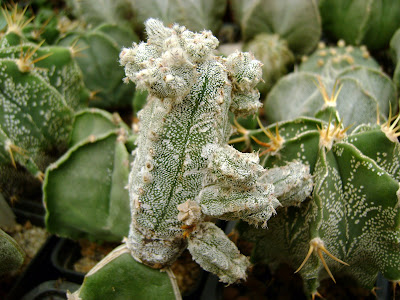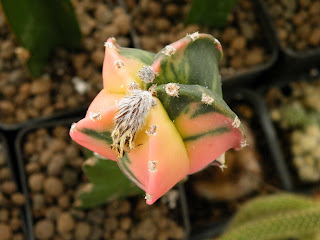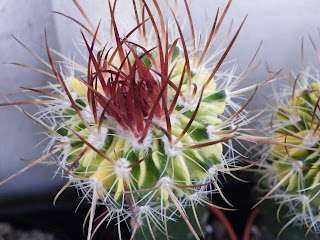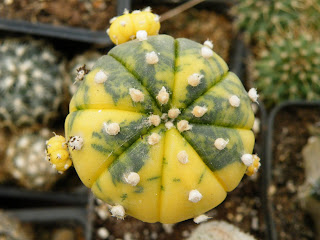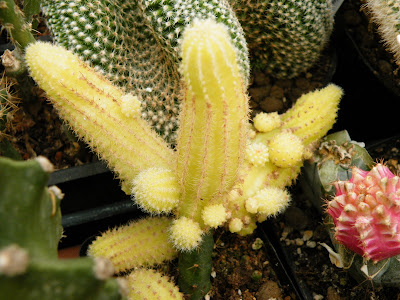 Lobivia silvestrii variegata is one of the most commercially available cacti. The Chinese are selling them in their thousands. These variegates have to be grafted because they lack chlorophyll.
Lobivia silvestrii variegata is one of the most commercially available cacti. The Chinese are selling them in their thousands. These variegates have to be grafted because they lack chlorophyll.Christate variegates of this species have been making it to collections. There are several forms of Lobivia silvestrii because they have been hybridised extensively with other Lobivia species and with Echinopsis. Hybrid species are selected mostly for their pretty flowers which range from yellow to red and there are some with bicolored flowers.
 Other variegates have been selected for body colour or thickness. Thus, one can find orange coloured L. silvestrii. I find that the yellow variants turn dark orange at the top when held in very strong sunlight producing flower shoots that not all of them open.
Other variegates have been selected for body colour or thickness. Thus, one can find orange coloured L. silvestrii. I find that the yellow variants turn dark orange at the top when held in very strong sunlight producing flower shoots that not all of them open.Lobivia silvestrii was named Chamacereus silvestrii when it was first discovered. It was eventually placed in the Genus Lobivia and subsequently the Genus Echinopsis, because the Genus Lobivia has now been amalgamated with Echinopsis. A trend not everyone agrees with. The
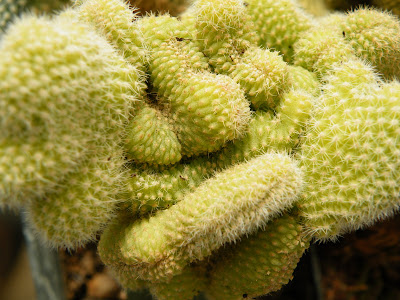 common name is peanut cactus.
common name is peanut cactus.The debris on some of my pictures are caused because I am always accidentally toppling the cacti in my greenhouse due to lack of space.

The monstrose plant on the left is also the same species. It is a mutation that has occurred in a private cactus collection in Malta. I have seen similar mutation forms (yet distinct enough), from Spain eBay sellers. The monstrose form is not very easy to keep and needs to be re-grafted after a few years.






















